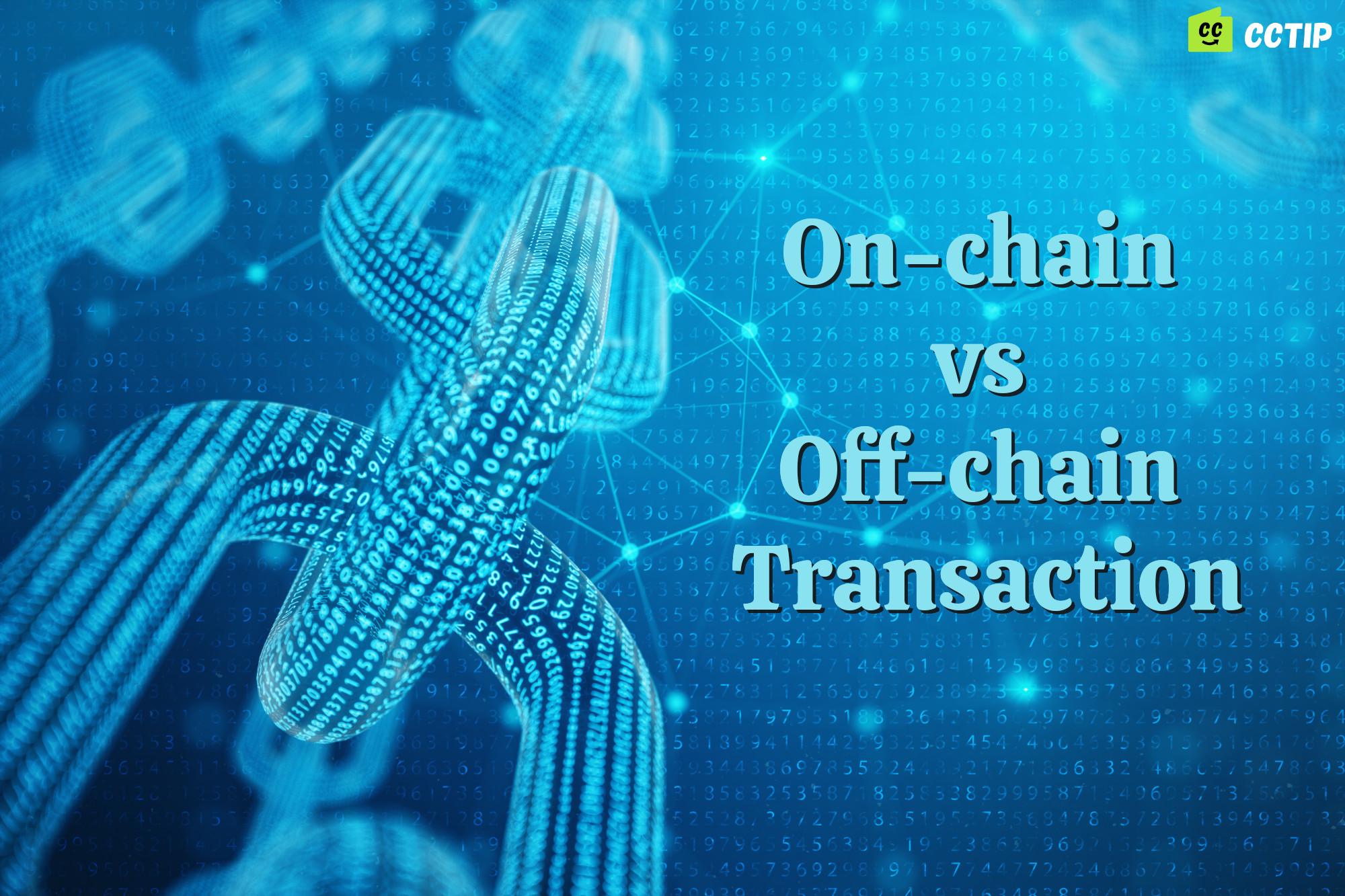On-chain Vs. Off-chain Transaction: Difference Explained.
On-chain transactions are cryptocurrency transactions that take place on the blockchain and are validated by the integrity of the network. Off-chain transactions refer to those that happen away from the blockchain. They involve a third party who acts as a guarantee.

The blockchain is a public ledger that keeps records of all cryptocurrency transactions. As a prominent blockchain application, cryptocurrency was intended to change our financial and payment systems. However, transactions on the blockchain can take place either on-chain or off-chain.
What is an On-chain Transaction?
On-chain transactions are cryptocurrency transactions that take place on the blockchain and are validated by the integrity of the network. On-chain transactions are available on the distributed public ledger and are visible to all network participants. For a transaction to be confirmed valid, all authenticated signatures from the participants must be an exact match. Furthermore, each transaction is recorded on the public blockchain, which can be reviewed, maintaining transparency because it cannot be modified or reversed once published. As a result, every on-chain transaction causes an update to the whole blockchain network.
When Bitcoin was first released, it was built on blockchain technology, which uses a consensus method that includes solving complicated mathematical problems to validate transactions on-chain, ultimately protecting and preserving the blockchain.
Since participants need to use their computers to solve a complex mathematical computation each time a block transaction is added to the blockchain, it can take quite a while to complete on-chain transactions. Only when the ledger has been fully updated and more than 51% of network participants establish consensus do on-chain transactions become complete and validated.
One significant advantage of on-chain transactions is that it provides their participants with transaction immutability, security, and transparency. All transactions are time-stamped and hashed before being stored on the blockchain. Transactions are also synced in each network node. This makes it incredibly difficult to attack the network and alter the transaction information.
The drawback of On-chain Transaction:
- One major drawback of the on-chain transaction is the high transaction fee due to the rewards given to the miners. In addition, on-chain transactions suffer from scalability issues and cannot manage bigger transaction volumes.
- On-chain transactions are not intrinsically anonymous because they can be readily linked to their source. After all, all transactions are visible to everyone on the blockchain.
- On-chain transactions can occasionally be slow, particularly when the network is congested. Therefore, a sufficient number of confirmations must be gathered over time to ensure that the results cannot be changed.
What is an Off-chain Transaction?
Off-chain transactions refer to those that happen away from the blockchain. They involve a third party who acts as a guarantee. The parties to the transaction reach an agreement outside of the blockchain. Both parties must consent to the transfer, and a third party must certify the transaction. The parties involved in the transaction must exchange receipts for cryptocurrencies and send the information to the third party who claims the receipts. Off-chain transactions are quick and fast, with no additional costs, as the value of crypto assets is moved off-chain.
Typically, the third party in off-chain is a layer-2 solution created to process transactions independently and reduce the load on the main chain. In comparison to on-chain protocols, there are several off-chain protocols available.
Lighting Network
The Lightning Network is a layer-2 solution that attempts to grow blockchain networks by off-chaining a sequence of transactions to enable faster and cheaper transactions. In addition, the lightning network allows for instant crypto transactions, removing the burden of longer waiting times. As a result, interest in Bitcoin has increased, and more people are looking for investment opportunities in the Lightning Network.
Sidechain (Liquid Network)
A sidechain is one of the simplest off-chain solutions; it consists of an independent Blockchain that runs in parallel with the mainnet blockchain, working independently with any consensus mechanism of choice. The Liquid Network is a sidechain protocol, which means that it uses the Bitcoin blockchain for data but processes transactions alone. The Liquid Network is faster and less expensive than the main blockchain and is confidential, which means it does not expose the amount of cash involved in a single transaction.
Advantages of Off-chain Transaction
- Instant Execution: Network users do not validate off-chain transactions, so they are carried out instantly.
- Greater Security and Anonymity: Off-chain transactions offer participants improved security and privacy because they are not available publicly on the network. As a result, it is nearly impossible to connect or identify a user by their address.
- Zero Transaction Fees: Since it's a decentralized peer-to-peer network and no miner or other participant is necessary to validate the transaction to receive a reward, off-chain transactions often do not charge transaction fees.
On-chain Vs. Off-chain: The Difference
The Takeaway
On-chain and Off-chain are carried out depending on where their transaction is completed on the blockchain. Off-chain transactions are an excellent option for anyone looking for a quick, affordable, and private transaction.
In contrast, on-chain transactions might be the better option for individuals that value security, validity, and immutability. However, most cryptocurrency projects choose off-chain transactions since they appear to give superior benefits to on-chain transactions when considering all available possibilities.
Nevertheless, as mentioned earlier, depending on the project use cases, both completely execute their transaction as expected.
Check the Cwallet Blog daily for articles that help you understand cryptocurrency and blockchain technology tenets. Join us on telegram for more information.
What's more?
Cwallet does not charge any deposits, withdrawals, and token swaps fees. Therefore, using Cwallet is absolutely FREE!
So, what are you waiting for?
Download Cwallet NOW.